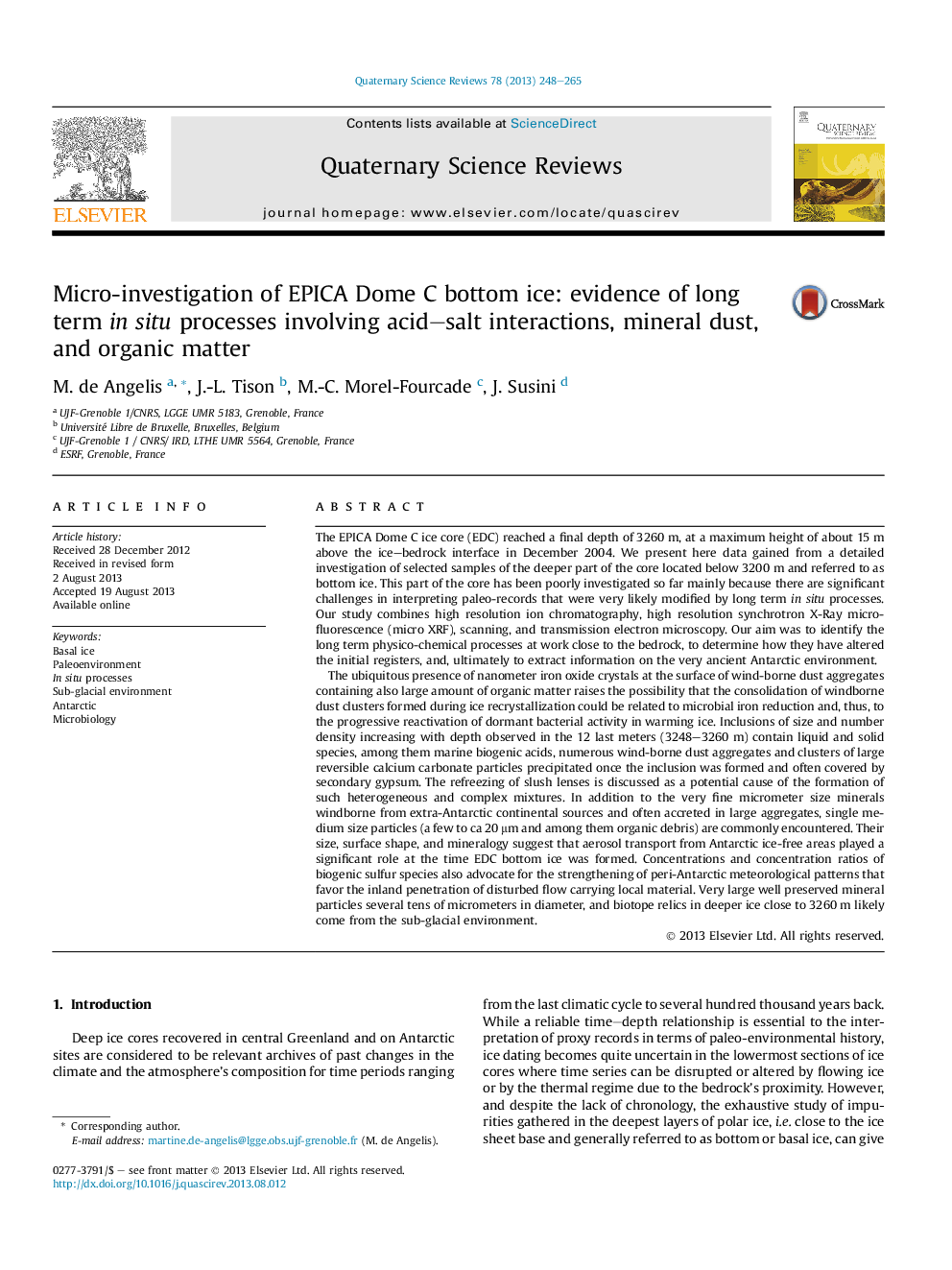| کد مقاله | کد نشریه | سال انتشار | مقاله انگلیسی | نسخه تمام متن |
|---|---|---|---|---|
| 6445648 | 1640856 | 2013 | 18 صفحه PDF | دانلود رایگان |
عنوان انگلیسی مقاله ISI
Micro-investigation of EPICA Dome C bottom ice: evidence of long term in situ processes involving acid-salt interactions, mineral dust, and organic matter
ترجمه فارسی عنوان
یک یکی از یک یکی از یک یکی از یک یکی از یک یکی
دانلود مقاله + سفارش ترجمه
دانلود مقاله ISI انگلیسی
رایگان برای ایرانیان
موضوعات مرتبط
مهندسی و علوم پایه
علوم زمین و سیارات
زمین شناسی
چکیده انگلیسی
The ubiquitous presence of nanometer iron oxide crystals at the surface of wind-borne dust aggregates containing also large amount of organic matter raises the possibility that the consolidation of windborne dust clusters formed during ice recrystallization could be related to microbial iron reduction and, thus, to the progressive reactivation of dormant bacterial activity in warming ice. Inclusions of size and number density increasing with depth observed in the 12 last meters (3248-3260 m) contain liquid and solid species, among them marine biogenic acids, numerous wind-borne dust aggregates and clusters of large reversible calcium carbonate particles precipitated once the inclusion was formed and often covered by secondary gypsum. The refreezing of slush lenses is discussed as a potential cause of the formation of such heterogeneous and complex mixtures. In addition to the very fine micrometer size minerals windborne from extra-Antarctic continental sources and often accreted in large aggregates, single medium size particles (a few to ca 20 μm and among them organic debris) are commonly encountered. Their size, surface shape, and mineralogy suggest that aerosol transport from Antarctic ice-free areas played a significant role at the time EDC bottom ice was formed. Concentrations and concentration ratios of biogenic sulfur species also advocate for the strengthening of peri-Antarctic meteorological patterns that favor the inland penetration of disturbed flow carrying local material. Very large well preserved mineral particles several tens of micrometers in diameter, and biotope relics in deeper ice close to 3260 m likely come from the sub-glacial environment.
ناشر
Database: Elsevier - ScienceDirect (ساینس دایرکت)
Journal: Quaternary Science Reviews - Volume 78, 15 October 2013, Pages 248-265
Journal: Quaternary Science Reviews - Volume 78, 15 October 2013, Pages 248-265
نویسندگان
M. de Angelis, J.-L. Tison, M.-C. Morel-Fourcade, J. Susini,
